With its tropical environment and unique blend of indigenous and Western culture the Philippines regroups several sites classified in the UNESCO World Heritage Sites. Breath-taking rice terraces, colonial remains and a host of natural and marine parks make up the six sites recognized for their value to mankind in the Philippines.
The indigenous Malay culture of the Philippines was heavily influenced by the Spanish colonial rule and its introduction of Roman Catholicism, which became the major religion of the archipelago. Aside from exchanges with neighboring countries, the Philippines also started to use the English language and integrate modern pop culture when it became a US territory in the 20th century.
Within more than 1000 historical and natural sites in the world, the United Nations Educational, Scientific and Cultural Organization – UNESCO – has recognized the importance of the Philippine culture through the classification of six sites for their unique historical, architectural and natural value for mankind.
Here is the complete list of World Heritage Sites in the Philippines together with details and beautiful pictures to keep in mind for the use of travel and tourism professionals, and the viewing pleasure of all.
The 6 World Heritage Sites listed by the UNESCO in the Philippines
Baroque Churches of the Philippines
The four baroque Roman Catholic Churches were constructed under in the Philippines Spanish rule between the 16th and 18th century. These churches were built in Manila, Santa Maria, Paoay and Miag-ao but they collectively demonstrate a reinterpretation by Chinese and Filipino craftsmen of European Baroque architecture and decoration.
Church of the Immaculate Conception of San Agustín, Intramuros, Manila
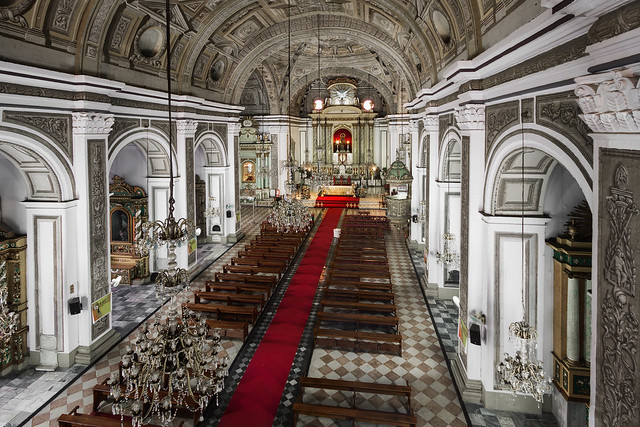
© Photo: Rafael Reyes
Church of Nuestra Señora de la Asuncion, Santa Maria

© Photo: Remar Lapastora
Church of Santo Tomas de Villanueva, Miag-ao
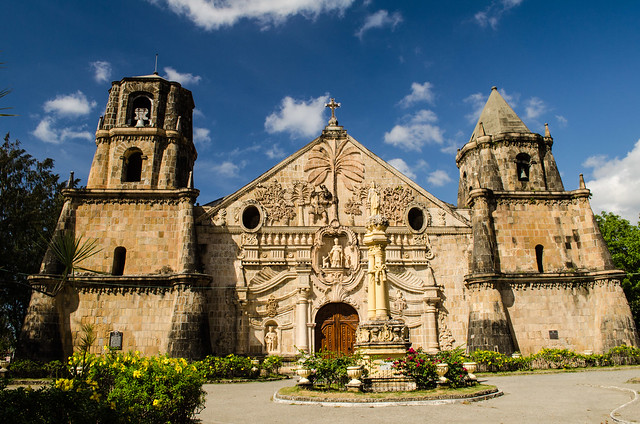
© Photo: interruptedz
Church of San Agustín, Paoay
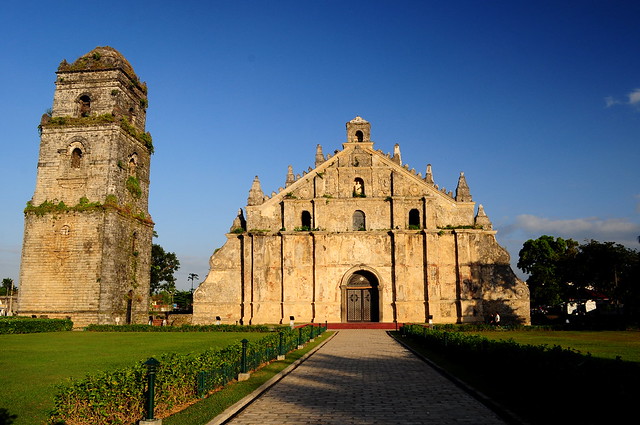
© Photo: Ferdinand Manuel
- Location:
- Manila, Philippines
- Santa Maria, Ilocos Sur, Philippines
- Miag-ao, Iloilo, Philippines
- Paoay, Ilocos Norte, Philippines
- Site type: cultural
- Year of inscription: 1993
Tubbataha Reefs Natural Park
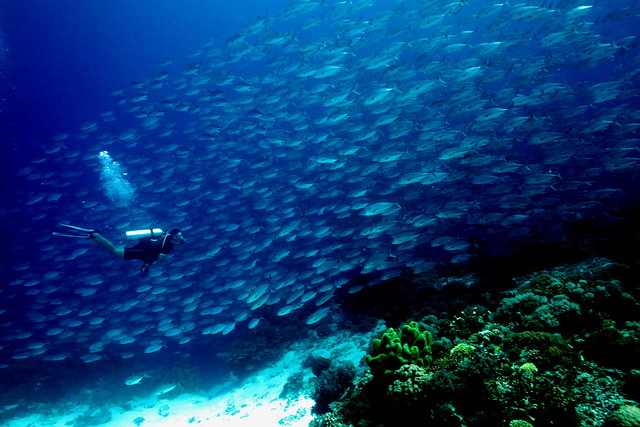
© Photo: q phia
The atoll reef of Tubbataha is a pristine coral reef hosting a very dense and varied marine wildlife. The Tubbataha Reefs Natural Park covers more than 130,000 ha and includes two coral islands, several lagoons and an extensive coral reefs with a 100m perpendicular wall.
- Location: Cagayancillo, Palawan, Philippines
- Site type: natural
- Size: 130,028 ha
- Year of inscription: 1993
Rice Terraces of the Philippine Cordilleras
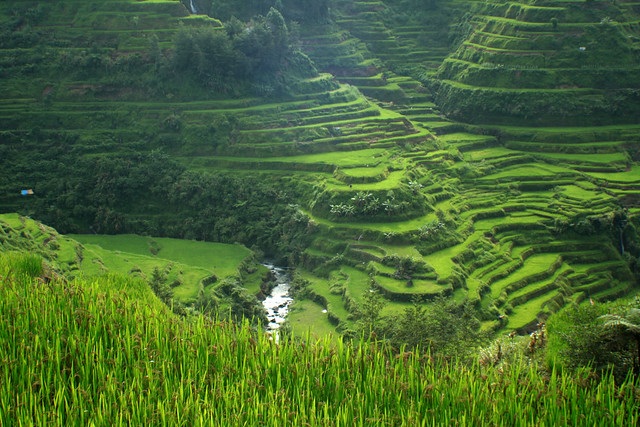
© Photo: laz’andre
The terraced rice fields of Ifugao have been formed out of the mountain slopes for more than 2,000 years. This agricultural tradition has created an exceptional landscape, fruit of the harmonious human integration into its natural habitat.
- Location: Ifugao, Cordillera Region, Philippines
- Site type: cultural
- Year of inscription: 1995
Historic Town of Vigan
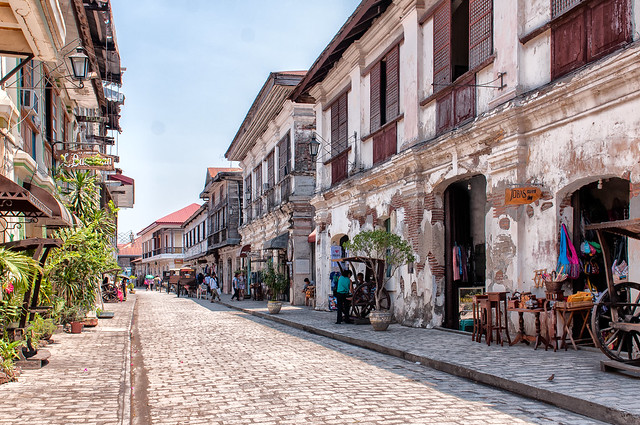
© Photo: Kenneth Paige
The town of Vigan is the archetype of Spanish colonial urban planing and architecture in the Philippines. Founded in the 16th century, the Historic Town of Vigan hosts many of well preserved European-style buildings, making it an unequaled cultural jewel in Southeast Asia.
- Location: Ilocos Sur, Philippines
- Site type: cultural
- Year of inscription: 1999
Puerto-Princesa Subterranean River National Park
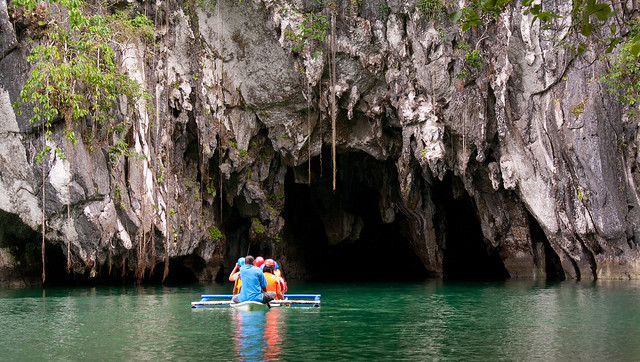
© Photo: ryan descallar
The Puerto-Princesa Subterranean River National Park is composed of a karstic landscape, with the particularity of having a underground river flowing under the limestone reliefs. It is a significant natural preservation site, with a “mountain-to-sea” ecosystem and dense forests with rich biodiversity.
- Location: Palawan, Philippines
- Site type: natural
- Size: 5,753 ha
- Year of inscription: 1999
Mount Hamiguitan Range Wildlife Sanctuary

© Photo: Peter Harlow
Ranging from 75 to 1,637m above sea level, the Mount Hamiguitan Range Wildlife Sanctuary hosts several land and water eco-systems of different elevations. The sanctuary provides habitat for a diverse array of fauna and flora, including several endangered endemic plant and animal species.
- Location: Davao Oriental, Philippines
- Site type: natural
- Year of inscription: 2014
Other Philippine sites submitted to the UNESCO tentative list
The Philippine authorities have also submitted the following sites to be considered for nomination as UNESCO World Heritage Sites:
- Batanes Protected landscapes and seascapes (1993)
- The Tabon Cave Complex and all of Lipuun (2006)
- Paleolithic Archaeological Sites in Cagayan Valley (2006)
- Kabayan Mummy Burial Caves (2006)
- Butuan Archeological Sites (2006)
- Baroque Churches of the Philippines (Extension) (2006)
- Petroglyphs and Petrographs of the Philippines (2006)
- Neolithic Shell Midden Sites in Lal-lo and Gattaran Municipalities (2006)
- Chocolate Hills Natural Monument (2006)
- Mt. Malindang Range Natural Park (2006)
- Mt. Pulag National Park (2006)
- Apo Reef Natural Park (2006)
- El Nido-Taytay Managed Resource Protected Area (2006)
- Coron Island Natural Biotic Area (2006)
- Mt. Iglit-Baco National Park (2006)
- Northern Sierra Madre Natural Park and outlying areas inclusive of the buffer zone (2006)
- Mt. Mantalingahan Protected Landscape (2015)
- Mayon Volcano Natural Park (MMVNP) (2015)
- Turtle Islands Wildlife Sanctuary (2015)
 Here is the full list of the UNESCO World Heritage Sites in the Philippines. For more information about them, visit the Philippines page on the website of the United Nations Educational, Scientific and Cultural Organization – UNESCO.
Here is the full list of the UNESCO World Heritage Sites in the Philippines. For more information about them, visit the Philippines page on the website of the United Nations Educational, Scientific and Cultural Organization – UNESCO.
For more information on the other UNESCO sites in the ASEAN region, visit the World Heritage Sites in Southeast Asia.
Original header image: JamesIsMyLife for Wikimedia Commons
What do you think of these World Heritage Sites in the Philippines? Which do you prefer? Do you have some tips to make a better visit? Any other site in the Philippines you think should be added by UNESCO? Leave your comments below!

![The UNESCO World Heritage Site in Singapore [photo] UNESCO World Heritage Site in Singapore](https://aseanup.com/wp-content/uploads/2017/01/UNESCO-World-Heritage-Site-Singapore-150x68.jpg)
![The 37 World Heritage Sites in Southeast Asia [photos] UNESCO World Heritage Sites in Southeast Asia](https://aseanup.com/wp-content/uploads/2015/03/UNESCO-World-Heritage-Sites-Southeast-Asia-150x68.jpg)
![The 2 UNESCO World Heritage Sites in Laos [photos] UNESCO World Heritage Sites in Laos](https://aseanup.com/wp-content/uploads/2017/01/UNESCO-World-Heritage-Sites-Laos-150x68.jpg)
![The 4 UNESCO World Heritage Sites in Malaysia [photos] UNESCO World Heritage Sites in Malaysia](https://aseanup.com/wp-content/uploads/2017/01/UNESCO-World-Heritage-Sites-Malaysia-150x68.jpg)




